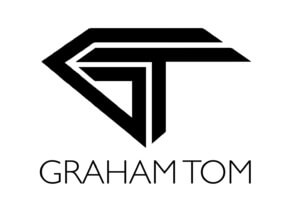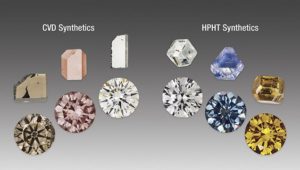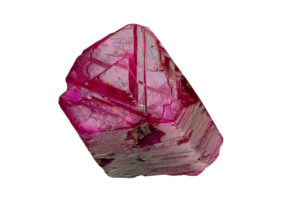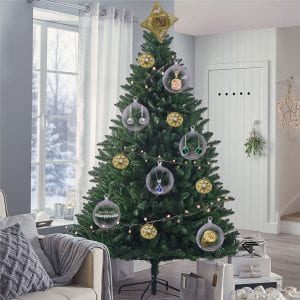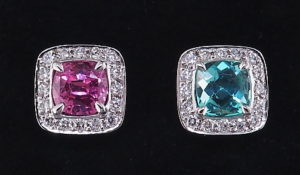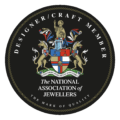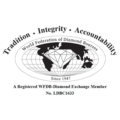Against expert advice, Edward Bishop heads to South Africa and saves a small fortune on a precious stone
When I asked Graham Tom about buying a diamond in South Africa he looked worried. I didn’t know if this was because he was pondering the proposition in general, or simply trying to imagine how I – the person who had just sent a stone of particular brilliance shooting across his desk, having somehow expelled it from a pair of locked tweezers – might achieve such a thing.
Graham is the fourth Tom in a long line of diamond dealers, and I was visiting him at his office in London’s Hatton Garden. Tom knows what he is talking about. He is respectable, respected and had kindly agreed to be my guide through the arcane world of culets, trilliants and bruting, not to mention the darker landscape of fraud, conflict and rip-offs. His advice would be worth listening to. Indeed, I would be a fool not to follow it.
“Whatever you do,” he said, “don’t buy a diamond in South Africa.”
Now this was advice I did not want to hear. For a start, while the rand might not be suffering the 18-to-the-pound indignities of a year ago, a rate of 12 was still attractive enough to have me dreaming of bargains. Surely a diamond must cost less in its own back yard?
Then there was the 10th wedding anniversary and a holiday to South Africa coming up. Rightly or wrongly, I suspected that my wife, Sarah, had never been quite happy with her engagement ring. I needed another diamond. One she and I could trust.
Tom sighed. His biggest concern was certification. Proper diamonds have laboratory certificates, personal ID cards on which are recorded their individual attributes: colour, weight, clarity and the vital statistics of their cut. The good news is that a reputable certificate will tell you nearly everything you need to know about your stone. The bad news was that Tom did not trust South African certificates.
“Try to get an EGL [European Gemological Laboratory],” he said. “And if anyone tries to give you a shop certificate, not one from a recognised laboratory, it’s likely to be bad news.” Before I left, he gave me one more tip. “If you’re not sure” he said, “you can do the newsprint test.” I looked blank. “Shine a bright light over the stone,” he said. “Put a newspaper or magazine under it and move it along a line of print. If you can see any letters through the stone – it’s not a diamond.”
A week later, under a dazzling South Africa sky, and armed with a dangerously small amount of knowledge plus an in-flight magazine for my newsprint test, I pushed open the door of a jeweller’s in Cape Town. Leaving the sunny bustle of the city’s waterfront, I found myself entering the weird half-light that is the world of diamond dealing.
Earlier, at the the Mount Nelson Hotel, we’d been given hope that our quest would be successful. It wasn’t just the diamond jewellery on display in the shop windows next to the elegant lobby, but the place itself. With its old-fashioned, luxurious furniture, romantic airs and pink walls, it is the hotel equivalent of the late Dame Barbara Cartland. Taking afternoon tea in the lounge were immaculate grannies, dripping, naturally, with diamonds.
Hopes, however, were dashed by the prices. Diamond pricing is a murky business. Stones from mines the world over are still sold by De Beers, the all-powerful company started by Cecil Rhodes in 1880. De Beers gathers diamonds in “sight boxes”. Selected manufacturers – there are currently 80 or so – are then “honoured” to be allocated a “sight”. They cannot buy individual stones. They take everything in the box, whatever the quality, or they take nothing at all. The uncertainty of what might emerge once the stones in the box have been cut and polished is the ideal starting point for an unstable retail market.
Then there is the fact that two stones that look identical to the naked eye apart from a barely perceptible difference in colour command completely different sums. Thus, a flawless one-carat stone might retail in London at around £20,000. The same-sized stone, but fractionally less brilliant and with minor impurities visible only under a 10 times magnifying loop, would fetch about £4,450. Add to this the enormous difference in retail overheads and you have exactly the type of environment in which the unsuspecting punter can become hopelessly lost. And because it is impossible to tell the difference between stones that look the same, the certificate is all important. Our first investigations made us think that Graham Tom had been right. South Africa was no place for ingénues.
However, we had taken some sensible precautions (see the basics section below) such as asking for the prices of stones in Hatton Garden before we left; a simple comparison told us all we needed to know about the cost of diamonds on the Cape Town waterfront. Despite the fact that there were numerous shops with loose certificated stones to sell, these smart-looking jewellers were not – as they claimed – charging 30 per cent less than London.
Indeed, in one shop, a stone that would cost about £4,500 in Hatton Garden was quoted to us at more than £5,500. We drew a blank at shops in the city too. Perhaps it was this disappointment that made Cape Town lack a little sparkle; or perhaps it was because the waterfront has the air of a series of uninspiring airport shopping lounges. We came away thinking that Cape Town was – like a piece of glass mounted in a Tiffany ring – a rather charmless city in the most beautiful setting in the world.
Everything looked up, though, when we arrived at the lovely town of Franschhoek, situated in a spectacular valley of vineyards about an hour’s drive inland. Along the main street people sat at restaurants and cafés in the autumn sun, and shops and market stalls sold their wares.
The Tracey family has been in the diamond business since 1926, and has two shops here. The family purchases rough diamonds from the mines of the North West Province and the Cape West Coast, and then cuts and polishes them. Its prices were good. A stone costing about £4,465 in Cape Town was £2,450 at Tracey’s. And the same stone would have cost more than £3,500 in London.
If we hadn’t been going to Johannesburg we would have bought here. The friendly and helpful proprietor, Evan Tracey, was frank enough to admit that we might get a slightly better price in Jo’Burg, but he did warn us of the dire risk of being car-jacked and mugged. Our guidebook agreed about the car-jacking and mugging, and added the worrying news that we would almost certainly be shot as well.
Fear apart, Johannesburg was immediately promising on the diamond front. On the road from the airport we saw an enormous De Beers poster depicting a set of diamond cricket stumps, splayed by a blue tanzanite ball: “There’s more than one way to bowl a maiden over” ran the slogan. Then American Swiss Diamonds advised us to “Get Stoned”, over a picture of a sparkling gem about the size of a small car.
But how were we going to escape Johannesburg with our lives, let alone a diamond? The streets of the city’s leafy northern suburbs – where we were staying at the comfortable Westcliff Hotel (another Mount Nelson-style pink confection) – were bristling with spikes and razor wire, and when the guard dogs stopped barking you could almost hear the humming of electricity whizzing along miles of wire fencing and metal security gates. Take away the shrubbery and add a few watchtowers and you could have been in a prison camp.
So, with a degree of trepidation, we took a trip into central Johannesburg to De Decker diamonds, the wholesaler that provided the flawless two-carat stone for the government of Botswana to present to the Prince of Wales on a state visit in 1984.
The Diamond Centre in Commissioner Street – where De Decker has its office – has security that would put El Al to shame. We were invited by a prominent sign to deposit our firearms in the safe provided. We were searched, went through a metal detector, were searched again, signed something in triplicate and were finally given clearance up to the sixth floor. There we met Nora Smeenk, and began on the now familiar ritual of the bright lights, magnifying loops and the unwrapping of little paper files as sparkling stones were extracted for our inspection.
As Evan Tracey had predicted in Franschhoek, prices were indeed slightly cheaper. A deal was struck (we bargained a little). The EGL certificate – just what Graham Tom said we should look for – told us we had a “D” colour, 0.63 carat diamond with VVS 2 “inclusions” (see the basics section below for more on these arcane – but essential – categories). Smeenk gave us a lift back to our hotel. (“Don’t take a cab,” she said, “they’re really dangerous.”) We survived the rest of our stay, suffering only the theft of Sarah’s mobile phone from our hotel room on our last day. At least nobody tried to shoot us.
Back in London, I thought I should pay Tom a visit. Although the stone had passed the newsprint test, I was still curious to know whether we had been horribly duped. I returned to the bright, sealed little room. Tom inspected the certificate. He was disappointed it had no quality grading of polish and symmetry, and no record of whether it was fluorescent.
That said, he peered at our purchase through his magnifying loop. He put it down. “How much did you pay for this?” he asked. I told him. He considered for a moment and tapped a few numbers into the keypad of his calculator. He looked up. “You’ve done all right.”
I left Tom’s office and wandered into a few shops. The cheapest quote I got for the stone we had bought was £800 more than the price we had paid. In other words, we had saved the equivalent of two return flights to South Africa. This was both good news and bad news. Good, because on hearing of this rare financial success Sarah said – and I agreed – that we must go back some time. Bad, because I think she may also have mentioned the words “matching earrings”.
How to buy a diamond
Loose diamonds for sale should have a laboratory certificate with details of “the four Cs”: carat, colour, clarity and cut.
Carat is a unit of weight, unlike with gold, when it is a measure of clarity. One carat is divided into 100 “points”, so a diamond weighing three-quarters of a carat is known as a “75 pointer”.
The colour of a diamond is graded alphabetically. The best colour is none at all, a “D”. The more yellow a diamond, the shabbier its pedigree. A Z is practically brown. The colour difference between a D and an E is barely perceptible, and is marginal even between a D and a J. Only by about K do you notice any yellowish tinge.
Clarity is measured by impurities seen at 10 times magnification. A stone can be flawless (F) through to something littered with “inclusions”. These can be “Very Very Slight” (VVS1 or VVS2) through to Slight (SI 1 or SI 2) and beyond to “Included” (I1, I2 and I3). The certificate should diagrammatically record the positions of impurities, allowing you – with the aid of a magnifying loop – to ensure that the stone you are inspecting is that described.
The overall shape of cut is relatively easy to identify: round, brilliant, pear, marquise or emerald, for example. However, it is the quality of the cut that is the most confusing vital statistic for the amateur – that combination of facets, angles, depth of crown, width of girdle and all the other seemingly-insignificant little slices that can, to the trained eye, determine whether a stone refracts light in a manner that gives it what the experts call “fire”.
The certificate will usually record a bewildering number of such angles, but without in-depth knowledge or a computer programme it is impossible for the amateur to determine the quality from these details. A reputable certificate will make life easier by describing the quality from “poor” to “excellent”.
The certificates that are professionally recognised are predominantly GIA and HRD. We did not find these in South Africa, where all the certificates we saw were EGL or Jewellery Council of South Africa (JCSA). Although these grade the quality of the cut, they do not give grades of polish and symmetry (unlike GIA and HRD), and do not say if a stone is fluorescent.
Value can be affected by these factors, so to an extent you will be taking a risk. As long as the dimensions of the cut are about right and are described on the certificate as “good” or better, and as long as the stone does not seem to take on a milky quality in sunlight (which can indicate fluorescence), you should be all right (you might try to persuade the seller to shine a UV light on the stone to check for fluorescence).
As for pricing, most dealers use the “Rapaport Report”, otherwise known in the trade as “the Rap Sheet”. This publication – updated fortnightly – lists values of gem-quality diamonds according to the four Cs and will be used as a starting point for prices that you are quoted. However, it is not a bible for the identification of the proper price for a diamond.
The four Cs are not the only factors that can affect the quality, and therefore price, of a diamond. Polish, symmetry and fluorescence can influence value. You can’t be sure, therefore, that you’re getting a good deal – even if you can get hold of the current Rap Sheet price – if a dealer offers you a price 50 per cent “under Rap”.
There are tax implications when buying diamonds in South Africa. Loose stones and jewellery attract local VAT at 14 per cent. You can claim this back at the airport when you leave, but you will not get a full refund as you will have to pay exchange-rate commissions. To work out how much you will pay reckon on adding about two to three per cent to the price before VAT.
On entry into the UK you are liable to pay three per cent duty and VAT on any made-up jewellery. On loose stones you only pay VAT (there is no separate duty). All the prices quoted in the article have been adjusted to include UK taxes.
The best website among many that claim to educate visitors on the subject of diamond evaluation and purchase is www.diamonds-diamonds.info.
Source: The Telegraph, Travel
Click here to see article on The Telegraph website.
